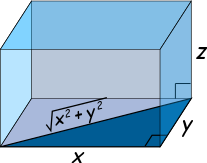Text
Stray Sheep
I recently stumbled upon the song "Stray Sheep," by Kenshi Yonezu (米津玄師の「迷える羊」). I started listening to the lyrics and really liked them, so I thought I would translate them here. I took a few creative liberties in the translation to make it sound a little better than a direct translation might, but this is my first time doing a translation like this, so feel free to leave me some criticism. I think the chorus is a bit cheesy, but I didn't change it, so just pay attention to the rest, I guess. It gets more and more surreal as the song goes on (you can listen to the song at https://www.youtube.com/watch?v=DAeERkHEy00, and the original Japanese lyrics are at https://www.uta-net.com/song/288876/). Enjoy!
Can you remember the day you were born?
The very first lines in your script?
The stage spinning, the performance pushing on,
but there is no Saint Mary behind the scenes.
Even though I cannot sing my first and last song well,
the directors keep their silence.
The end of the screenplay has not been written,
but I open my mouth, as if to pray, and begin.
One thousand years from now, we will not be alive,
but I will be your friend on every day, loving you always.
Someone out there is waiting for our story…
A huge machine missing its vital backbone
beautifully straddles a city.
The props begin to collapse;
the audience stares coldly.
The performance continues in an unbreaking line. Over and over, we sheep find ourselves lost.
Together, we will endure. The film is still rolling.
One thousand years from now, we will not be alive,
but I will be your friend on every day, loving you always.
Your lonely waiting will continue into distant time.
You will always be waiting to heroically save someone.
0 notes
Text
Lifespans
As of the time of this blog post (November 2021) the oldest person alive is Kane Tanaka, born on January 2, 1903.
When Tanaka was born, the oldest person alive was born was Margaret Ann Neve, who was born May 18, 1792. Neve's and Tanaka's lifespans overlapped for three months before the former's death in April 1903.
This means that, although the two women lived on opposite sides of the globe, they theoretically could have met each other. Their overlapping lifespans span 229 years, including portions of the 18th, 19th, 20th and 21st centuries.
Thus, using some tenuous logic, the potential secondhand memory of humanity stretches back to the time of Marie Antoinette.
0 notes
Text
Dictionary
I have a German-English dictionary at home that was published in 1848. I don't speak German, so I don't really use it, but it is still fun to look at the English words that they thought were necessary in a German-English dictionary back then. Here are some:
alopecy - loss of hair, wool, or feathers
anaclystic-glasses - I couldn't find the definition. It's your best guess
bettellees - same as above
cacochymy - an unhealthy condition of bodily humours (that's how outdated this dictionary is)
dephlogisticate - to remove phlogiston from (again, that's how outdated this dictionary is)
dorp - small town or village (I think - I may have found the definition for another dorp on accident, I'm not sure)
foxship - having the character of a fox, cunning
latirostrous - having a wide nose
panegyrize - to praise highly
quadrivalve - a door or shutter with four folds
quinquagesima - the Sunday before the beginning of Lent
sternutative - causing sneezing
stinkard - an insult that means just about what you would guess
thrustle - a special type of machine for spinning wool
uxorious - exhibiting an excessive or submissive fondness for one's wife
This is only a few. I guess they wanted to be thorough - this dictionary has 2,000 pages full of weird words like these.
0 notes
Text
Water
3 Impressions: No. 3, The Sanctuary by Josef Hofmann
Miroirs: III. Une barque sur l'océan by Maurice Ravel
Gaspard de la nuit, M. 55: I. Ondine by Maurice Ravel (esp. played by Ivo Pogorelich)
L'isle joyeuse, L. 106 by Claude Debussy
0 notes
Text
Three-Dimensional Pythagorean Theorem
I was just thinking about how to calculate a distance in three dimensions given its length on the x-, y-, and z-axes. Who knows why. I didn't know how to do this yet, so I kind of just figured it out on my own. If you already know the Pythagorean Theorem, the proof for this is one of the most satisfying things in math, in my opinion:
Here is the length we are looking for:

If we take the base of the prism and connect two corners diagonally, we can find the length of the connecting line using the Pythagorean Theorem for two dimensions: since a^2+b^2=c^2, here, the line's length is √(x^2+y^2), as is shown below.

Then, if we draw another connecting line between one of the ends of the line from the step above and the opposite corner of the cube, as is shown below, then we have another right triangle, with the side length we just found as one of its legs.

Then, using the 2-dimensional Pythagorean Theorem again, we can figure out the diagonal: one leg is √(x^2+y^2), and the other is z. Since a^2+b^2=c^2 in a right triangle, (√(x^2+y^2))^2+z^2=c^2, the square of the side length we are looking for. Simplifying this, we have x^2+y^2+z^2=c^2, so √(x^2+y^2+z^2)=c. And there's our answer!

And that's all there is to it. It is, like I said, a very satisfying proof. Images courtesy of mathsisfun.com.
0 notes
Text
Blog
This blog has no real purpose. I will post things as they come to me, with no connection to any other posts. These are simply things that stand out to me or interest me. The blog posts I write might be short, or might be long. They might be quotes, or jokes, long reflections, or simply pictures I found. Whatever I put here is unrelated.
1 note
·
View note